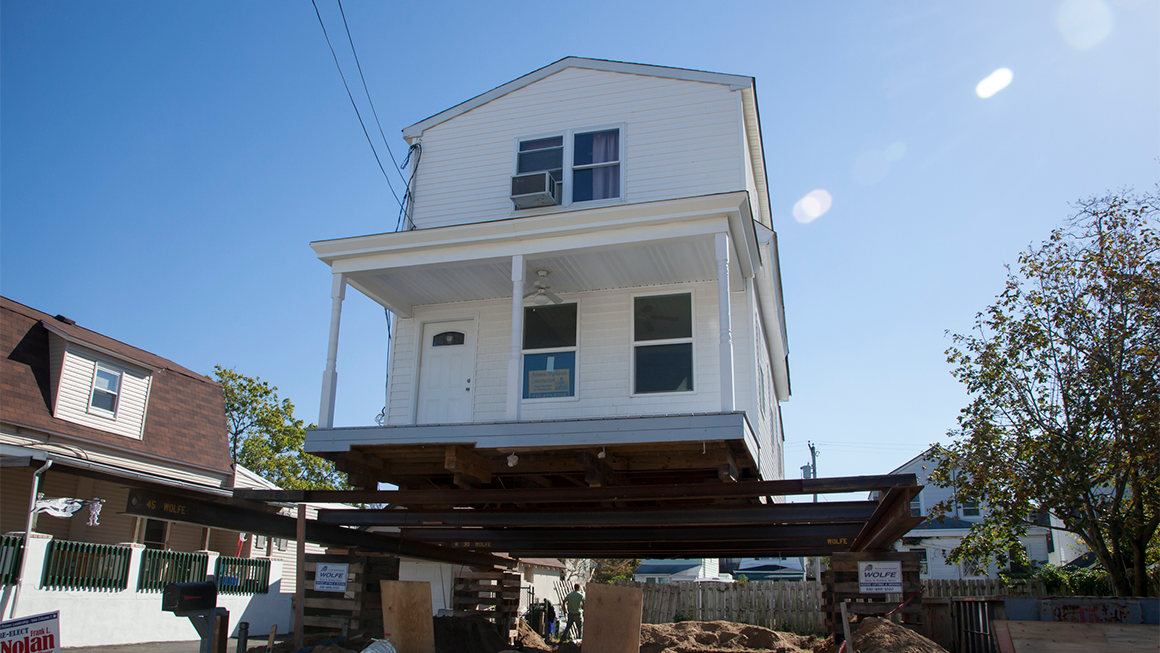
The Federal Emergency Management Agency (FEMA) recently announced the cancellation of its Building Resilient Infrastructure and Communities (BRIC) program and the removal of Flood Mitigation Assistance (FMA) funding for 2025. BRIC and FMA are the federal government’s largest and second-largest programs focused on hazard mitigation—actions communities take before disasters to reduce the loss of life and property when disasters do occur.
BRIC and FMA are programs with broad bipartisan support, with BRIC signed into law by President Trump in 2020 and FMA established in 1994 with bipartisan congressional support. BRIC funds disaster planning, land acquisition, emergency evacuation shelters, and more, helping communities upgrade their utility grids or municipal water and sewer systems to prevent wildfires and better handle flooding. FMA funds projects that reduce or eliminate the risk of repetitive flood losses in communities insured by the National Flood Insurance Program (NFIP). If a community needs to retrofit a culvert or elevate buildings above flood levels, FMA could be able to help.
Without these programs, the vast majority of federal funding for disasters will be spent on response and recovery after disasters occur and in the places they occur, rather than attempting to reduce costs through predisaster mitigation—even as events such as floods and wildfires become more frequent and more damaging as a result of climate change. Predisaster mitigation not only saves lives, but it’s also a good investment: studies by the National Institute of Building Sciences (PDF) and the US Chambers of Commerce find that hazard mitigation programs can generate benefits of between $6–$13 for every dollar invested.
Indeed, as a group of US legislators wrote in a recent letter to FEMA’s leadership decrying the cancellation of the BRIC program, “Natural disasters are no longer confined to a ‘season’; instead, the risks persist throughout the year.” In 2024, Hurricanes Helene and Milton caused approximately $220 billion in damages, reflecting a growing trend of disasters causing more-expensive losses. In fact, the cost of disasters has grown so large that insurance companies are raising rates and withdrawing coverage in markets throughout the US, adding to the nation’s cost of living crisis.
Ultimately, cutting the two largest hazard mitigation programs could mean the loss of nearly $3.3 billion in existing hazard mitigation funding from BRIC, plus potentially billions more that won’t be awarded in years to come, threatening the safety of communities nationwide.
Communities in all states stand to lose more than $3 billion for hazard mitigation
BRIC’s cancellation jeopardizes both obligated funding that has been formally dedicated to projects via signed grant agreements ($1 billion) as well as funding for projects that have been selected by FEMA for awards but have yet to sign a formal grant agreement ($2.3 billion). Though some applications—roughly 7 percent, historically—selected for an award are ultimately not awarded, the majority (93 percent) of selected applications go on to be formally awarded.
Every state and five territories would lose critical hazard mitigation resources if BRIC were cancelled. According to FEMA, “If grant funds have not been distributed to states, tribes, territories and local communities, funds will be immediately returned either to the Disaster Relief Fund or the US Treasury.”
Taking back these funds could disrupt projects already underway and would likely halt planned projects in their tracks. Given the challenges of identifying alternative sources of funding, projects may be permanently cancelled, wasting the significant resources communities have already invested in designing project concepts, convening stakeholders and partners, and applying for funding.
FEMA’s decision to not accept FMA applications for 2025 means communities will miss out on the $600 million in funding that was originally announced. To illustrate the potential effects of not funding FMA grants moving forward, we analyzed the program’s spending between 2020 and 2024. FMA selected a total of $1.5 billion across 626 projects in 36 states and 164 congressional districts during this period. The recipients of the most FMA funds were Louisiana and Texas, which alone account for three-fifths of all selected funding.
Without FMA funds, communities will have less capacity to invest proactively in flood mitigation projects. Houses that might have been elevated above flood levels will remain exposed to flooding. Floodwalls, levees, culverts, and other flood management infrastructure will remain unbuilt, with adjacent communities exposed to greater flood risk. And the federal government will continue to pay for many of the resulting damages because it insures exposed properties against flooding.
Cuts to hazard mitigation programs put all Americans at risk
BRIC and FMA are bipartisan programs that invest in American communities before disasters occur, saving lives and money. Both programs have awarded hundreds of millions of dollars to urban and rural congressional districts across the country.
FEMA’s cancellation of BRIC and its withdrawal of FMA funds for fiscal year 2025 threaten the safety and financial integrity of communities across the US. In the short term, states and local communities will have fewer resources, even as disasters become worse. In the longer term, these moves may herald a federal retreat from hazard mitigation, as indicated in the recent executive order on “state and local preparedness.” BRIC and FMA already directly fund applications submitted by states and localities, so eliminating these programs entirely offers little to be gained—but much to be lost.
Download the complete data tables, by state and congressional district, here.
Let’s build a future where everyone, everywhere has the opportunity and power to thrive
Urban is more determined than ever to partner with changemakers to unlock opportunities that give people across the country a fair shot at reaching their fullest potential. Invest in Urban to power this type of work.